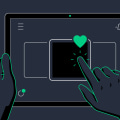In the world of user experience (UX) research, analytics and data tracking tools are essential for understanding user behavior, preferences, and pain points. These tools provide valuable insights into how users interact with a product or service, allowing designers and researchers to make informed decisions and improvements. With the ever-increasing demand for seamless and intuitive user experiences, the importance of utilizing these tools cannot be overstated. In this article, we will explore some of the top analytics and data tracking tools for UX research, their features, and how they can benefit your design process.
Whether you are a seasoned UX researcher or just starting out, this comprehensive guide will provide valuable information to help you enhance your research efforts. So buckle up and get ready to dive into the world of analytics and data tracking tools for UX research. In today's digital age, user interface design has become a critical aspect of creating successful websites and mobile apps. With the ever-increasing competition in the online space, it is essential to continuously improve the usability and visual appeal of your digital products. This is where analytics and data tracking tools for UX research come in handy, providing valuable insights into user behavior and preferences.
In this article, we will cover everything you need to know about these tools and how they can help you elevate your design projects. Firstly, it is important to understand the main search intent of people looking for information on user interface design. They are likely seeking ways to enhance their website or mobile app by creating a user-centered design that is responsive and visually appealing. Therefore, it is crucial to include tips and techniques for creating a user-centered design, as well as information on responsive design for different devices. In order to create a successful user-centered design, it is important to prioritize the needs and preferences of the end-user. This can be achieved through conducting thorough user research, which involves gathering data on user behavior, preferences, and pain points.
By using analytics and data tracking tools specifically designed for UX research, designers can gain valuable insights into how users interact with their product, what features are most used, and where improvements can be made. Another important aspect of user interface design is ensuring that the design is responsive and optimized for different devices. With the increasing use of mobile devices, it is essential to have a design that adapts seamlessly to various screen sizes and resolutions. This not only improves the user experience but also boosts search engine rankings. Readers searching for information on analytics and data tracking tools for UX research may also be interested in learning about the latest trends in UI and UX design. This includes updates on design principles, user experience techniques, and emerging technologies.
It is important to stay up-to-date with these trends in order to continuously improve the design of digital products and stay ahead of the competition. Finally, readers are likely looking for practical resources and tools that they can use for their own design projects. Including real-life examples and case studies showcasing how these tools have been successfully utilized in the past can provide valuable insights and inspiration for designers. These examples can also help readers understand how these tools can be applied in different scenarios and industries.
Understanding User-Centered Design
User-centered design is an approach to creating digital products that focuses on the needs and preferences of the end user. It involves understanding the target audience, their behaviors, and their goals in order to design products that meet their needs. This method is crucial for creating successful digital products because it puts the user at the center of the design process.By understanding their needs and preferences, designers can create intuitive and user-friendly interfaces that enhance the overall user experience. This, in turn, leads to increased engagement, satisfaction, and loyalty.
Responsive Design for Different Devices
Responsive design is a website design approach that allows a website or app to adapt to the screen size and orientation of the device it is being viewed on. This means that whether a user is accessing the website from a desktop computer, tablet, or smartphone, the design will automatically adjust to provide the best user experience. One of the main benefits of responsive design is that it caters to the various devices that users may access a website or app from. This is crucial in today's digital landscape where users are constantly switching between different devices to access online content.With responsive design, your website or app will be optimized for all screen sizes, ensuring a seamless and consistent experience for all users.
Latest Trends in UI and UX Design
In today's fast-paced digital world, the field of UI and UX design is constantly evolving. With new technologies and advancements, there are always new trends emerging in the design world that can greatly impact the overall user experience. One major trend in UI and UX design is the rise of minimalistic and simplistic designs. This approach focuses on clean and clutter-free interfaces, with an emphasis on functionality and ease of use. This trend has been influenced by the growing demand for more intuitive and user-friendly designs. Another trend gaining popularity is the use of microinteractions.These small animations or interactions within a website or app can greatly enhance the user experience by providing visual feedback and making the interface more engaging. Additionally, there has been a shift towards incorporating more personalization in UI and UX design. With data tracking tools, designers are able to gather valuable insights into user behavior and preferences, allowing for more personalized experiences for each individual user. Lastly, there has been a focus on creating designs that are accessible to all users, including those with disabilities. This not only improves the overall user experience but also promotes inclusivity and diversity in design.
Real-Life Examples and Case Studies
One of the key benefits of using analytics and data tracking tools for UX research is their ability to provide real-life examples and case studies. These tools allow designers to collect and analyze data from actual users, giving them a better understanding of how their design decisions impact the user experience. For example, let's say a designer is working on a new website for an e-commerce company.By using analytics and data tracking tools, they can track user behavior on the website, such as click patterns, time spent on each page, and overall conversion rates. This data can then be used to make informed design decisions, such as improving navigation or simplifying the checkout process. In another case, a mobile app designer may use these tools to gather user feedback through surveys or heatmaps. This data can reveal pain points in the user journey and help the designer make necessary improvements to enhance the overall user experience. These are just a few examples of how analytics and data tracking tools have been effectively used in real-life projects to improve user experience and overall design. By utilizing these tools, designers can make data-driven decisions that lead to better, more user-friendly designs.
Top Analytics and Data Tracking Tools for UX Research
When it comes to UX research, having the right tools is crucial for gathering and analyzing data.In this section, we will highlight some of the most popular analytics and data tracking tools used by designers and researchers.
1.Google Analytics
Google Analytics is a free web analytics tool that provides detailed insights into website traffic and user behavior. It offers a wide range of features such as real-time data tracking, custom reporting, and conversion tracking, making it a valuable tool for UX research.2.Hotjar
Hotjar is a popular user behavior analytics tool that allows you to track how visitors interact with your website. It offers heatmaps, session recordings, and surveys, giving you a better understanding of how users navigate your site and where they encounter difficulties.3.Crazy Egg
Crazy Egg is another useful tool for visualizing user behavior on your website. It offers heatmaps, scroll maps, and click reports to help you identify areas for improvement and optimize your site's design.4.UsabilityHub
This tool offers a variety of usability tests such as preference tests, click tests, and five-second tests to gather feedback from users on your design.It also provides heatmaps and click maps to visualize user behavior.
5.FullStory
FullStory is a powerful session replay tool that allows you to watch recordings of user interactions on your website. It also offers heatmaps and click maps to help you understand how users engage with your site. These are just a few examples of the many analytics and data tracking tools available for UX research. Each tool has its own unique features and benefits, so it's important to choose the ones that best fit your research needs and budget. Analytics and data tracking tools are essential for any UX research process, providing valuable insights into user behavior and preferences. By incorporating these tools into your design projects, you can continuously improve the usability and visual appeal of your digital products.We hope this article has provided you with a comprehensive understanding of these tools and how they can benefit your design process.


